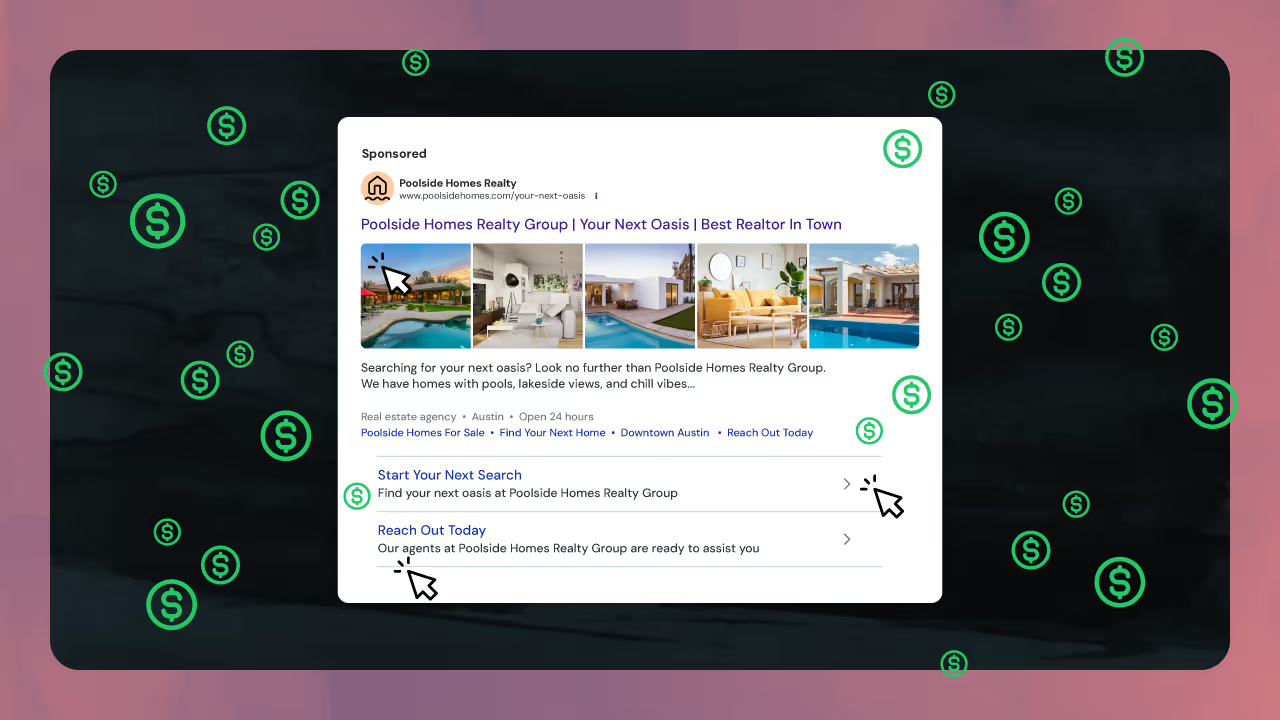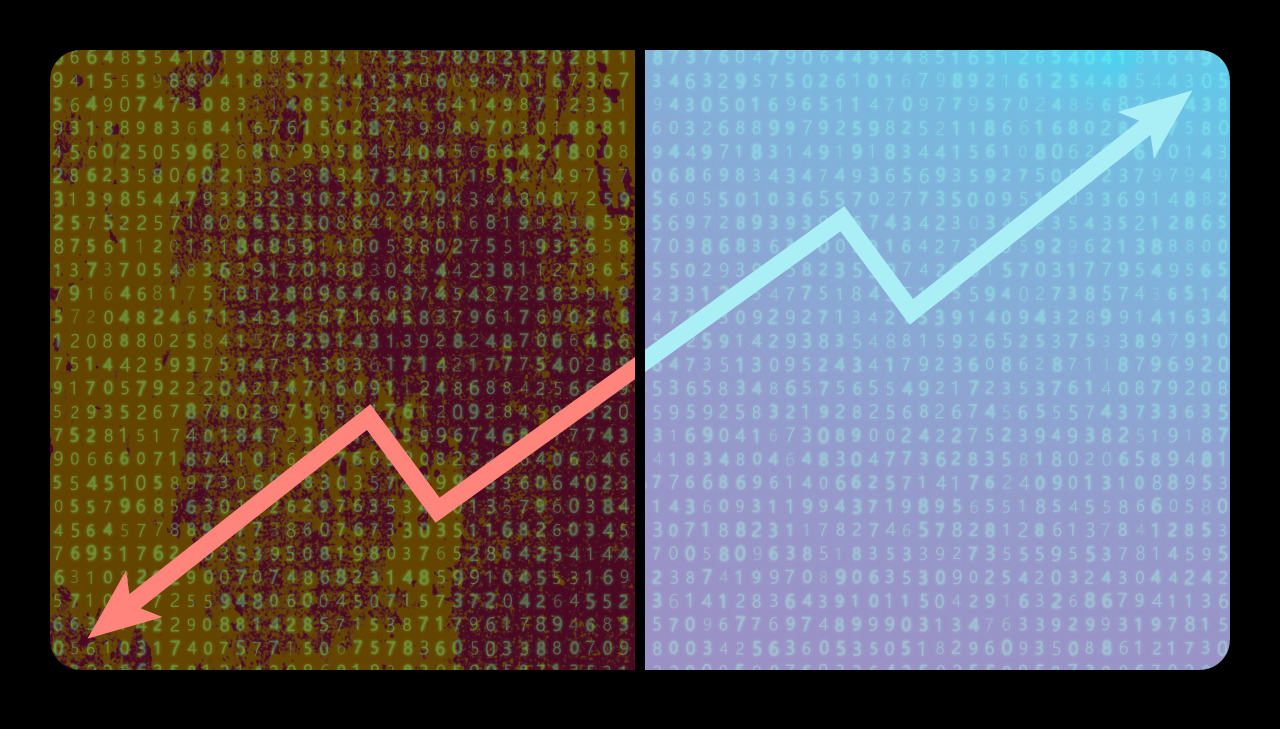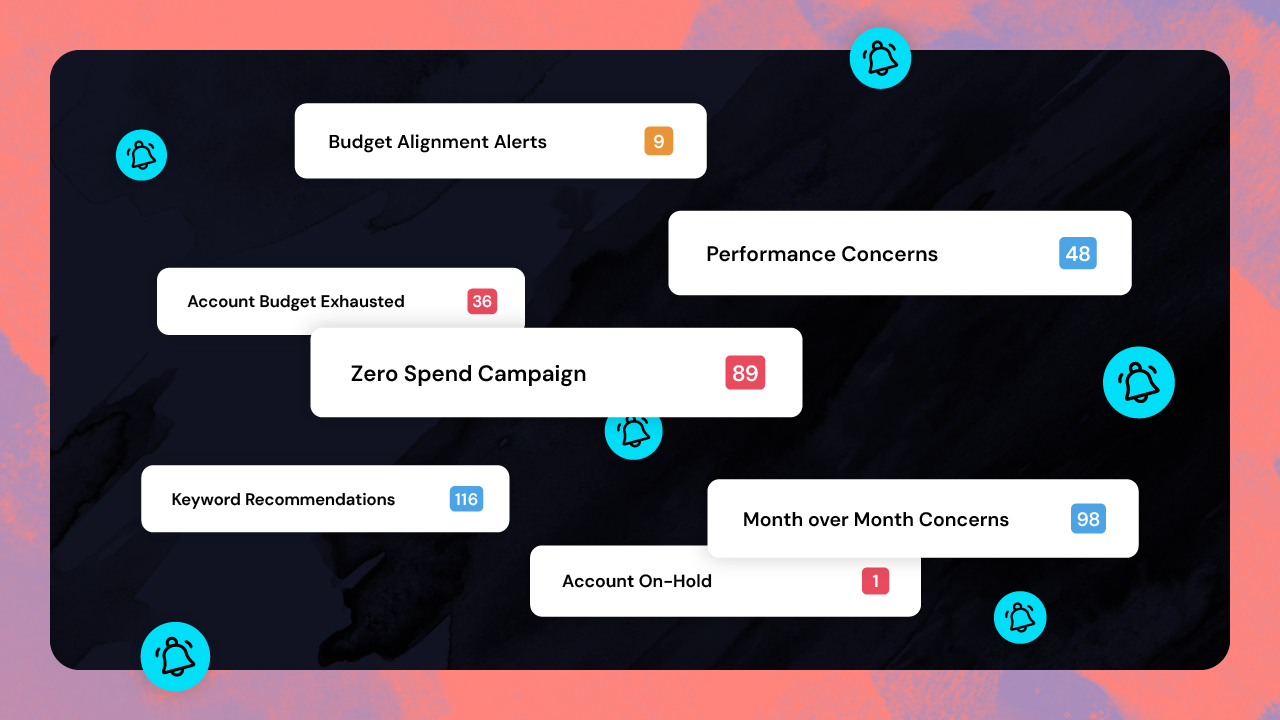Even with more advertising channels available than ever before, search advertising reigns supreme. National search ad spend stood at $137 billion USD in 2024, accounting for a whopping 40% of all U.S. digital ad spend.
With so much money at stake, it’s crucial to manage every PPC budget diligently. Manually managing multichannel advertising for large-scale enterprises or agencies is nearly impossible at the pace required to hit client goals without over- or underspending.
Automated PPC budgeting solutions can reel in chaotic campaign spend management, giving you both precision and capacity at scale.
What is budget automation for PPC advertising?
Budget automation for PPC advertising is a technology-driven approach that uses rule-based automation to manage advertising spend across search campaigns without constant manual work. For instance, instead of manually adjusting budgets or reallocating funds between campaigns, advertisers can use automated systems to automatically handle these tasks based on predefined parameters and real-time performance data.
With the help of automated budgeting solutions, PPC campaign management can shift from a reactive, time-intensive AdOps function into a proactive, strategic function. Rather than spending hours each day checking spend rates and making adjustments, you can focus on high-value tasks that maximize performance.
Common follow-up questions:
- Why are so many advertisers switching to automated PPC budgeting tools right now? Automation ensures budgets are paced correctly, removes tedious manual workflows, and significantly reduces costly overspend. Automated PPC budgeting tools can also minimize underspend and reallocate budgets to align with trending opportunities.
- Can automated budgeting tools manage cross-channel budgets or large account lists? Yes, but it’s important to look for solutions that are built for large-scale advertising operations. The right tools make it easy to oversee hundreds or thousands of budgets across different ad channels, without switching between different tools.
- What’s at risk if I use manual budget processes for PPC advertising in 2025? Manual work often leads to overspending, issuing client credits, and missed growth opportunities. Even with search holding strong as the most popular advertising channel, client demands are shifting towards a holistic multichannel strategy. You must find solutions that reduce manual budgeting work across multiple ad formats—walled gardens as well as open web channels. In other words, not just search.
Watch now: managing advertising budgets at scale with automation
Why should I use automation to solve PPC budgeting challenges in 2025?
Using automated budgeting systems can help you instate a proactive budgeting strategy instead of a reactive one. PPC specialists spend an enormous amount of time checking spend, tweaking pacing, and adjusting budgets—time better spent on strategy. Simply put, budgeting manually is not sustainable as account loads grow.
Four ways to use automation to solve PPC budgeting challenges
- Set automated pacing based on specific client and performance objectives
Automated pacing strategies can be set to allocate specific spend amounts based on how different clients want to pace their budget throughout a month. Whether clients want to pace evenly over the month, only spend on weekends, or allocate higher spend during their operating hours, different spend strategies can be managed automatically with automation rules.
- Set automated alerts for spend anomalies, optimizations, and more
You can also use automated budgeting alerts to stay notified about zero-spend accounts, unexpected spending spikes, or budget reallocation recommendations. Putting these opportunities or risks front and center enables you to react quicker, optimize PPC campaigns for peak performance, and spend less time manually checking each account for issues.
- Use underspend protection to guard against low performance and credits
Automation tools like underspend mitigation are also helpful for PPC campaigns. With underspend mitigation, automation rules look for budget underspend across your PPC campaigns and propose adjustments as needed. This ensures that you’re maximizing spend every month, which can also improve revenue and profit margins.
- Use overspend protection to eliminate overspending and mitigate fraud
Overspend protection is another automation tool that takes the guesswork and stress out of PPC budgeting, particularly as the end of each month approaches. This automation feature turns off any campaign or account once the set monthly budget target is reached. Overspend protection tools are also highly effective at mitigating ad account hacks, as one of our clients experienced, because they enforce strict spending limits even if spending anomalies occur.
What automation tools are best for PPC budget management?
Look for budget management tools that directly tackle the biggest challenges you face in your daily management of search campaigns: manually pacing campaign budgets, reducing over- and underspend, and alerting you instantly to budget issues before they hurt your ROI. By automating the most time-consuming elements of PPC budgeting, you’ll gain valuable time back for strategic work and fostering client relationships.
Examples of budgeting automation tools for search advertising:
- Automated budget pacing: Automatically track and adjust pacing throughout the month, eliminating the need for daily checks and manual tweaks. Look for tools that let you choose different pacing strategies to align with unique client goals or vertical strategies.
- Real-time budget optimization: Shift spend toward high-performing campaigns and away from underperformers, automatically and in real-time, so you don’t have to monitor performance manually. Ideally, you can dictate what constitutes a “high-performing” or “low-performing” campaign for different PPC accounts. This means automation rules can correct actions based on specific client requirements.
- Overspend protection: Instantly pause campaigns if they approach or exceed budget limits, preventing costly overruns before they happen. One of Fluency’s clients saved hundreds of thousands of dollars after their Google Ads account was hacked because they used automated overspend protection on their search campaigns.
- Underspend mitigation: Proactively increases daily spend for campaigns lagging behind, ensuring you make full use of allotted budgets without constant intervention.
- Multichannel budget management: Dynamically reallocate spend across Google, Meta, and other platforms from a single dashboard so you’re not logging into multiple tools. Rather than managing PPC campaigns as an isolated workstream, managing cross-channel budgeting tasks in one place saves you time across multiple workflows.
- Bulk budgeting capabilities: Make mass adjustments easily by updating budgets for hundreds of accounts (or cross-channel campaigns) in just a few clicks. This saves you the work of updating campaign budgets on a one-by-one basis.
What kind of ROI can I expect from automated PPC budgeting tools?
Our 2025 agency survey revealed that advertisers using budgeting automation spend 63% less time managing budgets compared to before automation. This gives them approximately 11% of their work week back to dedicate to high-value tasks, like strategic planning or campaign optimizations.
The same survey highlighted that automation improves budget utilization efficiency by approximately 3.1%, which can improve an agency’s profit margins. For example, if a client’s monthly budget is $10,000 and you can increase their monthly spend from 95% to 98%, that’s an increase of $300 deployed every month.
Assuming an agency charges a percentage of media spend, this translates directly into higher fees: roughly $30–$60 more per client each month. Multiply that across 50 clients, and you’re looking at $18,000–$36,000 in incremental annual revenue without adding a single new account.
Automation's impact compounds at scale. These ROI benefits multiply rather than simply adding up. As illustrated above, you can bring in an extra $30-60 per client without hiring more staff. The time saved on execution work can be reinvested into activities that bring in even more revenue, like winning new clients through better strategy work or improving campaign results for existing clients.
The result is an exponential growth curve where each improvement makes the next one easier to achieve and more valuable.
PPC budgeting case study: Johnson Group reduces time spent on Google Ads and Meta budgeting tasks by 90%
Johnson Group, a full-funnel marketing and advertising firm, was looking for a better way to manage budgeting tasks for one of its major multi-location clients. With over 400 localized campaigns on Meta and an additional 1,200 on Google, the team’s capacity to manage the client’s needs with in-house tools was waning.
Jared Drahonovsky, Group Media Manager at Johnson Group, and his team manually managed pacing for +1,000 campaigns across both publishers. Drahonovsky estimates they spent two to three days every week making pacing adjustments and tweaks, aiming to maximize the client’s budget without overspending.
"We were spending so much time pacing every day, every week...it was the biggest thing we were looking to solve," said Drahonovsky.
The Johnson Group needed a multichannel solution “that could operate on both Google and Meta to meet our pacing goals,” according to Drahonovsky. They brought in Fluency because they felt the system’s toolset was most aligned with their multichannel, multi-location budgeting needs.
Fluency integrates data from Google Ads, Meta, and other publishers into Fluency’s single system. That means Drahonovsky and his team can manage pacing updates, underspend mitigation, and other budgeting tasks from one place, en masse.
“Fluency helps reduce underspend to marginal nominal numbers and reduces overspend—quite literally—to zero for our customers,” said Drahonovsky. “Automation has made budget pacing way more efficient than I would have ever expected it to be.”
Budgeting automation had a significant impact on how the team managed their client’s franchise PPC campaigns. Instead of four or five team members spending 12-15 hours a week on pacing, the Johnson Group team now spends less than five hours every month to perform the same tasks: a whopping 90% decrease in time spent on budget pacing.
“The things that used to take us weeks to do now take us hours, maybe minutes,” said Drahonovsky. “We wanted to spend less time on the day-to-day management and spend more time on strategy and client communication. Fluency helped us accomplish that.”
Ditching tactical maintenance for strategic PPC budget management
Agencies and enterprises leveraging PPC budgeting automation can handle more accounts without scaling headcount, deliver better results, and improve client satisfaction.
Our latest data shows that after a year with automation, the typical ad strategist can handle two to four times as many accounts as they could without automation. Over time, these operational strengths translate directly to scalability and business growth as teams can take on more clients without adding headcount or sacrificing client relationships.
Modern PPC advertising demands budget management tools built for agility and speed. Manual budgeting workflows worked fine when there was less competition and far less strategic complexity (PMax, anyone?). But these days, advertisers risk driving up waste and inefficiency if they’re not using the right automated solutions.
Automated budget management can help your PPC campaigns shift from a high-risk, hands-on effort into a refined engine delivering predictable results for you and your clients. Learn more about how automation can support your agency, enterprise, or multi-location search advertising efforts.






